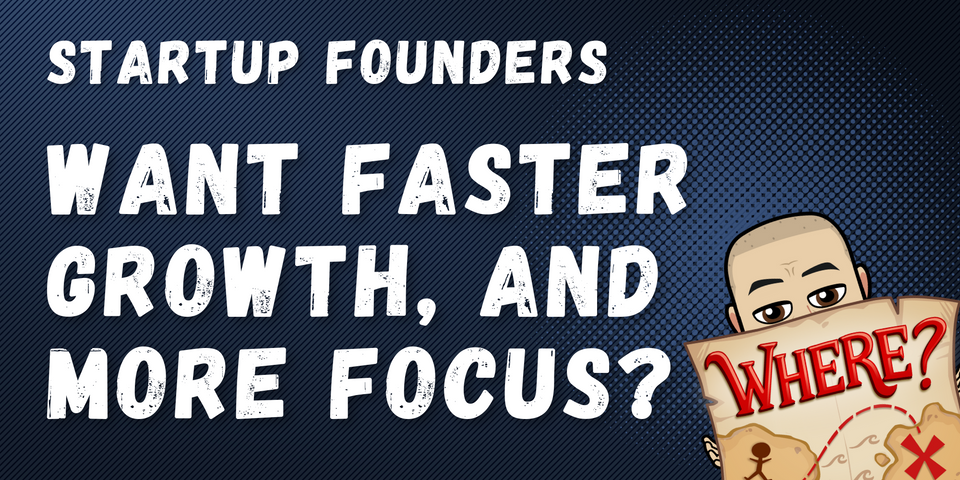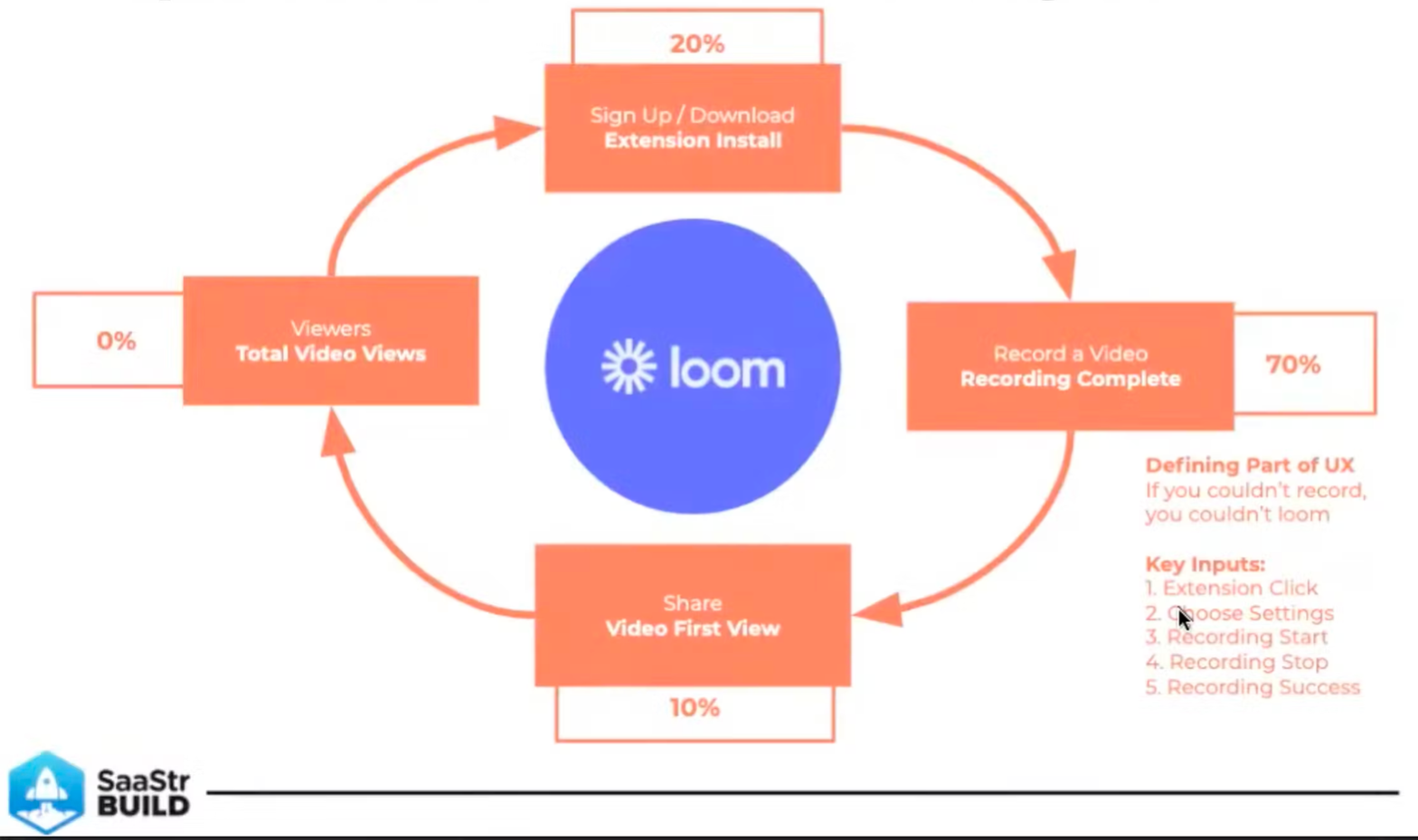Grow faster and focus your team - The Flywheel concept

Building a startup is tough.
You're never sure what's the right thing to do, there's a pile of things that MUST be done, everyone is pulling you in all directions, they are fires everywhere, you haven't had a good night sleep in ages and you've got to make sure there's money to keep the lights on 😱
That's just internally.
You also have competitors with a financial advantage, or a first mover advantage.
You MUST make sure that:
- You're working on the right thing.
- Your team knows what the most important problem you're solving right now.
- Your team is aligned and clear what to work on.
- Resources are allocated accordingly.
- You're moving fast towards your goal and vision.
Thankfully there's a tool to help with this, the flywheel.
The Flywheel concept used by Amazon, Loom and others to build a successful company.
They overcame technical challenges, but more impressively created a mind-shift in the market.
People regularly send video messages in the workplace (and buy online).
The flywheel helped them stay focused and move fast. The core idea is to focus on customer experience and make sure one happy customer, brings the next one (or next few).
Why this matters: You can leverage this tool to move faster, and significantly speed up your growth.
Create greater alignment, focus, and invest your resources in the right place.
✅ Faster impact
✅ Clearer mind and better decisions
✅ Happier team
I used the Flywheel with startups I coach and the responses have been great. Providing them clarity of what
Highly recommend teams try it.
Loom's CEO explaining how they did it
Loom’s founder and CEO, Joe Thomas shared how they used the flywheel to guide their decisions, allocate resources, create alignment and kick ass.
Look how easy it is to understand Loom’s model for success from this flywheel. What's the most important issue to solve, and how to make sure most resources are allocated to the it.

- The numbers represent resource allocation to each phase.
- The bold part is the leading metric for this stage e.g. Extension Install.
- Add additional context
- Suggestions or areas that could improve a certain section “How to influence?”
- Lower level metics that effect the stage, Inputs. e.g. Extension clicks, choose settings, etc.
What's a flywheel?
Conceived by Jim Collins in his book Good to Great, and popularized by Amazon. The flywheel effect is a metaphor used to describe how a company can create a virtuous cycle leading to success.
It takes A LOT of effort to get the flywheel turning, but once momentum is gained, it's self-sustaining, and drives enormous benefits.
To build a flywheel, it's important to focus on removing friction points and creating great user experience.
The goal is to help the company build momentum and grow.
Why you should use flywheel
The Flywheel is great for clearly showing how your company is going to win and aligning your team.
Once you have a Flywheel outlined, you'll hear many A-HAs from your team and investors. People will be able to make decisions by themselves, come up with better ideas, and you'll have something to weight decisions against.
"Which part of the flywheel does it support?" "Is it the part we should be working on?"
It's a powerful tool!
While a flywheel isn't a must, it's a great tool to flush out logical gaps in startups plans.
- How will you get more customers?
- How will you beat competitions with deeper pockets?
- What will make people return or refer to you?
- You think your competition isn't giving great service, or giving the same answer?
Few takeaways from Loom's CEO talk about flywheel
- Model how they’ll win - Loom knew they can at least imagine how they'll win. If you can't do that on paper, you better reevaluate.
- Evolve with time - The model isn't accurate and it'll evolve with time. They knew having a shared group understanding of reality is more important.
- Alignment - The team knew what’s the goal, how they’re trying to accomplish it, what’s the focus is, at each moment.
Loom took an extra step. The entire founding team went through Reforge's growth course together. This established common language and concepts 🤯 - Focus - Identify the greatest bottlenecks and focus efforts on them. At some points 70% of resources went to a single area.
- Adapting to change - Loom kept updating the flywheel and sharing it with the team. As the company's understanding of the problem evolved, they made sure to update the model and share it.
- Going from high-level into the details - Once they mapped the major areas, the team unpacked each area.
Brainstorming hundreds of specific metrics that will indicate progress.
They couldn't measure all of them, but this made them think deeply about the problem, what to measure and how to make impact.
Also thinking of features that can make an impact “How we can influence this?”
Actionable takeaways:
- Define your company's flywheel, talk with the team about it.
It won't be perfect the first time, but have a shared understanding of reality.
Adapt it over time. - Understand how you can accelerate your company's flywheel.
- Communicate the flywheel to your team.
Answer questions, show them which area their work impacts, and how they can have even more impact.
The session demonstrates how deliberate modeling of the world, and focusing on the biggest issues result in success.
I highly recommend you try to model your startup using a flywheel.
Few side notes
- The flywheel isn’t the entire work, it is the outcome of a thought processes. It should be update on a constant basis.
- The research and work that went into should also be discussed and shared.
- The flywheel is a tool to fold into it a lot of work, represent it easily and share with the team.
- It’s totally fine not to have a flywheel or a model. Try to achieve a shared model of reality that you adapt as a team.
- Presenting your business in a simple way will help your team and investors get what you’re trying to do.
“what truly set the big winners apart was their ability to turn initial success into a sustained flywheel, even if they started out behind the pioneers.”
― Jim Collins, Turning the Flywheel: A Monograph to Accompany Good to Great

Member discussion